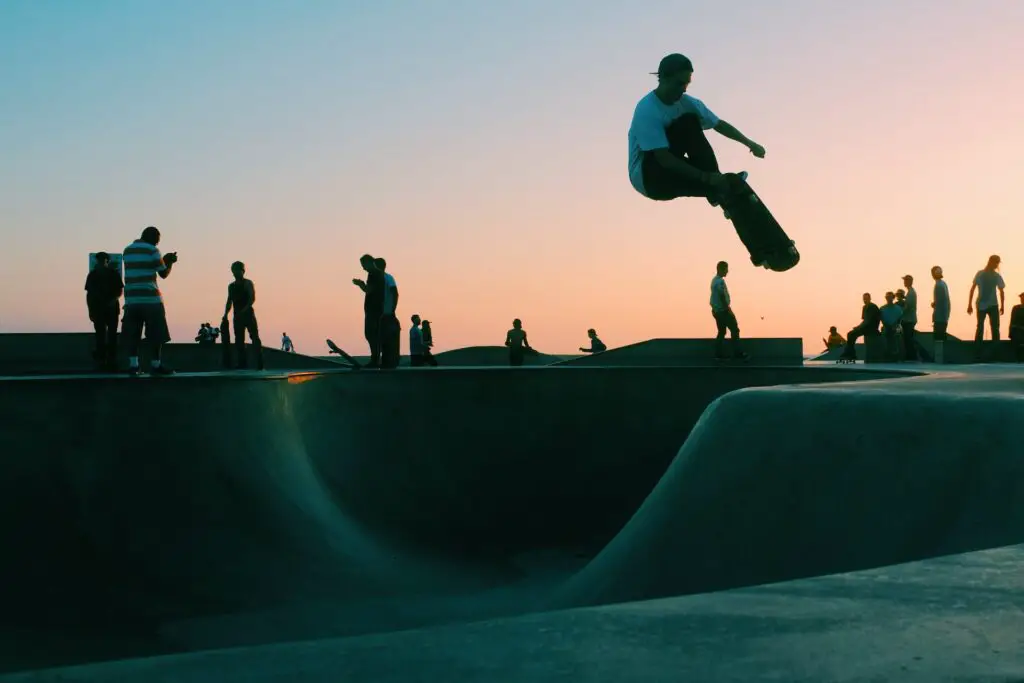
Skateboarding and pedestrian safety
Skateboarding is a popular recreational activity that combines elements of sport, art, and skill. It involves riding and performing tricks on a skateboard, a small board with wheels.
While skateboarding can be an enjoyable activity, it is important to prioritize safety, both for the skateboarders themselves and for pedestrians who share the same spaces.
What is the importance of skateboard safety?
Skateboard safety is crucial to prevent injuries and accidents. Skateboarding rules and regulations help ensure that skateboarders follow specific guidelines while riding in public areas.
These rules typically include obeying traffic laws, yielding to pedestrians, and using designated skateboarding areas when available.
Wearing a helmet while skateboarding is one of the most essential protective equipment. A helmet protects the head from potential injuries and reduces the risk of head trauma in case of a fall or collision.
It should fit properly and be worn at all times when skateboarding.
Learning how to ride a skateboard safely is another important aspect of skateboard safety. Skateboarders should maintain control, ride at a safe speed, and be aware of their surroundings.
They should also avoid skateboarding near traffic or in busy areas where there is a higher chance of accidents or collisions.
How can skateboarders and pedestrians coexist peacefully?
Creating a safe environment for both skateboarders and pedestrians requires mutual respect and understanding.
On college campuses, for example, campus safety measures can be implemented to separate pedestrian walkways from skateboarding areas. This helps prevent conflicts and provides designated spaces for both activities.
Skateboarders should always respect pedestrians by giving them the right of way and practicing safe riding techniques.
They should be mindful of their speed, avoid reckless behavior, and be aware of the potential risks their actions may pose to pedestrians.
By following these guidelines, conflicts between skateboarders and pedestrians can be minimized.
Understanding the common conflicts between skateboarders and pedestrians is also beneficial. Pedestrians may feel intimidated or disrupted by skateboarders riding on sidewalks, especially in crowded areas.
Likewise, skateboarders may face challenges when encountering pedestrians who are unaware of their presence. Open communication and mutual consideration are key to coexistence.
What are the risks of skateboarding in busy areas?
Skateboarding near traffic can be highly dangerous if proper precautions are not taken. Skateboarders should always be aware of their surroundings, follow traffic laws, and ride defensively.
This includes yielding the right of way to vehicles, carefully crossing roads and intersections, and using crosswalks when available.
When riding a skateboard in a crowded area, skateboarders should adopt a cautious approach. It is important to maintain control, watch out for pedestrians, and respect their personal space.
By maneuvering skillfully and anticipating potential hazards, skateboarders can avoid accidents and prevent injuries to themselves and others.
Skateboarding in crosswalks can be risky and impede pedestrian traffic flow. Skateboarders should always dismount and walk their boards when crossing the street at designated crosswalks.
This helps maintain order, prevent accidents, and conform to pedestrian safety standards.
How can skateboarders and bicyclists share the road safely?
Skateboarders and bicyclists can share the road safely by understanding and respecting each other’s rights and responsibilities.
Skateboarders should familiarize themselves with the rules and regulations that apply to both skateboarding and bicycling. They should ride in designated bike lanes when available and follow the same traffic laws as bicyclists.
Respecting each other’s space on the road is crucial for both skateboarders and bicyclists.
They should give each other a safe distance, avoid sudden movements, and communicate effectively with hand signals to indicate their intentions.
By being aware of each other’s presence and maneuvering considerately, conflicts and accidents can be minimized.
Proper communication through hand signals is an effective way for skateboarders and bicyclists to communicate their intentions on the road.
Hand signals such as indicating turns or stops can help prevent collisions and ensure the safety of everyone involved. This clear and concise form of communication enhances the overall safety of shared spaces.
What should pedestrians do to ensure their safety around skateboarders?
Pedestrians play an equally important role in ensuring their own safety around skateboarders.
They should always obey pedestrian signals and signs, such as crossing the street only when the pedestrian traffic light indicates it is safe to do so.
Avoiding distractions while walking near skateboarders is crucial to remain aware of their surroundings and potential hazards.
Pedestrians should also be aware of the dangers of skateboarding accidents. Skateboards can cause serious injuries if they come into contact with pedestrians, particularly if the skateboarder loses control.
By understanding these risks, pedestrians can take appropriate precautions and work to keep themselves safe when shared spaces are involved.

What can skateboarders and pedestrians do to promote a safe environment?
Both skateboarders and pedestrians can play a role in promoting a safe environment for everyone.
Education on skateboard safety is essential to raise awareness about the importance of following rules and using protective gear.
Schools, community centers, and local authorities can organize workshops and campaigns to educate skateboarders on skateboarding safety.
Promoting the use of helmets and protective gear is crucial for skateboarders. Wearing knee pads, elbow pads, and wrist guards can significantly reduce the risk of injuries in case of a fall or collision.
By setting this example and encouraging others to do the same, skateboarders can promote a culture of safety and responsible skateboarding.
Creating designated areas for skateboarders is another effective measure to promote safety. Skate parks, for instance, provide controlled environments specifically designed for skateboarding.
These areas often have surfaces that are more suitable for skateboarding and are free of hazards such as cracks or uneven pavements.

